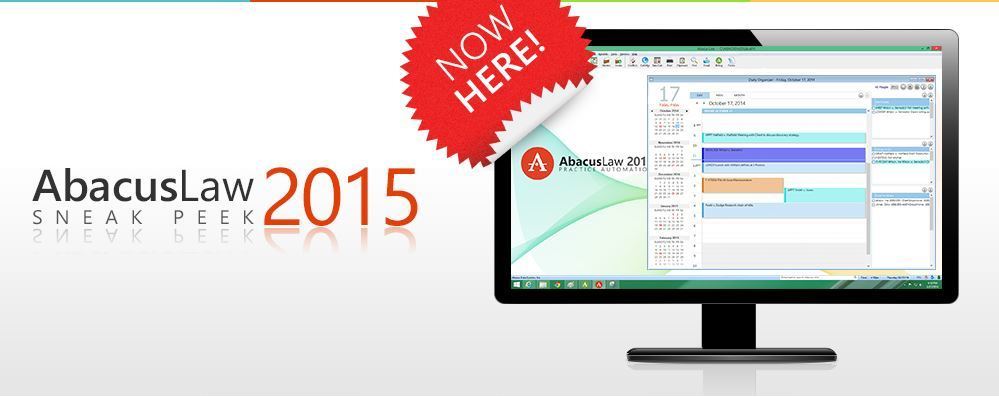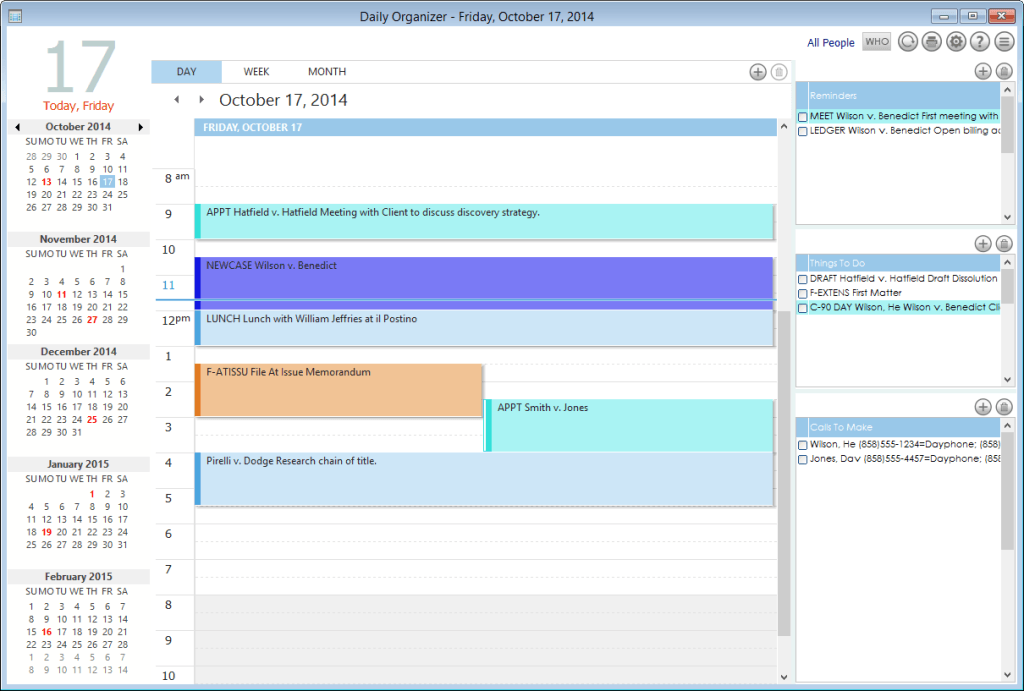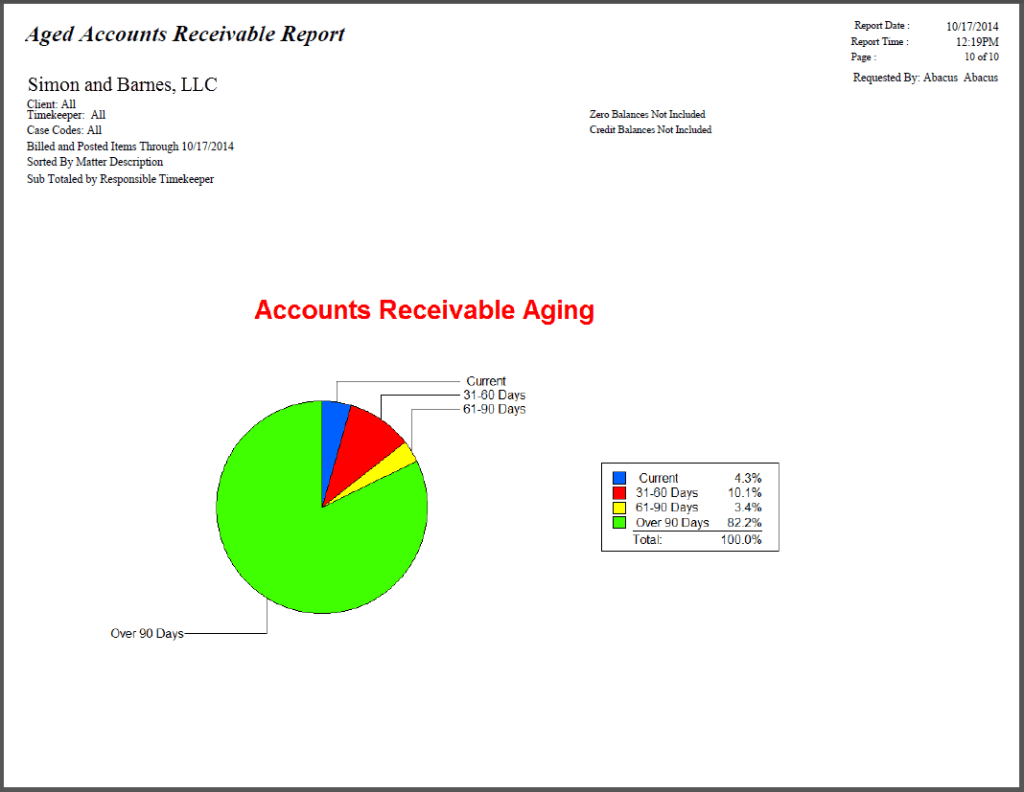
Among many competing practice management systems, AbacusLaw is a stalwart, on the market for over three decades. And while the software has been updated and enhanced over the years, its user interface was dated. Now, AbacusLaw has undergone an overhaul. The new version released yesterday, dubbed AbacusLaw 2015, promises to provide all the same features and functionality, but in a simpler, more elegant and more intuitive format.
Abacus developed the new version based on years of client feedback and usability research, Julie Feller, director of marketing at Abacus, told me during a walk-through yesterday. In addition to design and interface changes, AbacusLaw 2015 has been optimized to run with Abacus Private Cloud, the company’s secure, hosted environment that lets law firms run their applications through the cloud. (See my review: Abacus Unveils System that Puts Lawyers’ Desktops in the Cloud.)
In particular, AbacusLaw 2015 runs and stores all data on solid state disks. This gives it the speed to run optimally through Private Cloud, Feller said. Security has also been enhanced, she said.
With regard to interface changes, the software has been updated throughout with a new look-and-feel, easier-to-read fonts, more white space, and redesigned windows, icons and graphics. Feller said that there are more than 2,400 window views in the program, all of which have been redesigned.
The biggest visual change is to the calendar, which now mirrors Microsoft Outlook in its layout and functionality while retaining AbacusLaw features such as calendar rules, drag-and-drop reminders, things to do and calls to make.
The calendar view can be toggled among day, week and month views. Colors can be customized to code different types of appointments. Color codes can be set as defaults, so that, say, meetings always show up as blue. The calendar view can show everyone in the firm or be filtered by specific individuals.
There have also been changes to the billing and accounting features that come with the higher-level product, AbacusLaw Gold. One is the addition of scheduled flat-fee billing. If you have flat-fee cases, you can schedule client payments for any dollar amount and any period of time, and invoices will be automatically generated detail the amount currently due, the total due and the payment history.
Other billing and accounting modifications include:
- The ability to modify bill previews on the fly. Now, when you are viewing the PDF preview of a bill, you can make edits directly from the preview screen and see them reflected in the preview.
- The ability to set default invoice formats for different clients, such as email or print. When invoices are run every month, they will then be in the format that matches the client.
- When working with email through the Outlook integration, the time ticket is automatically populated with the email’s subject line, date and time.
AbacusLaw 2015 also provides new visual tools on the accounting side, allowing users to view reports as bar charts and pie graphs.
AbacusLaw already provided a variety of client-intake forms adapted for different practice areas. One change in AbacusLaw 2015 is the ability to save these as drafts. Later, when the attorney goes back and finalizes the form, the total time spent in drafting it is entered, and linked matter and calendar entries are created.
Among the variety of additional changes to AbacusLaw 2015 are:
- Enhanced security controls let users set access to accounting details on the matter record, such as who billed what, when and for how much.
- Enhanced accounting audits in the General Ledger.
- Time tickets now display the total time, giving a quick snapshot of billable hours broken into categories: billable, non-billable, flat rate, no-charge, etc.
- When printing bills, if the matter has pending payments, you will now be notified so you can post payments before printing the invoice. This will ensure that the bills your clients receive are accurate and reflect the most current information, helping to avoid any confusion.
- Draft recovery: If you accidently close AbacusLaw while in the midst of creating or editing a note or event record, upon logging back in, you will be presented with the option of returning to the draft, or keeping the record as it was before you began editing.
- To quickly fill forms with information about multiple parties associated with a case, you can ‘tag’ the parties to include by checking a box next to their name. All checked names’ information will populate the form in order, with the first name checked as the ‘primary’ contact.
- Case Profitably Report: Run a Profit/Loss Report for individual matters to see all of the revenues, costs and expenses the case incurred during a specific time period.
- To help ensure you do not lose any work, there are now consistent ‘save’ notifications across the AbacusLaw platform that prompt you to save your work before you exit or switch screens.
- When invoicing clients for multiple matters, their bills can now include a detailed summary of hard costs, soft costs, fees billed and a time keeper summary, in addition to aging details.
- You can now print one trust check for multiple matters to streamline your accounting.
There are no changes to pricing with this new release. The standard price for AbacusLaw is $47 per user per month and for AbacusLaw Gold is $67 per user per month. The Abacus Private Cloud service starts at $165 a month and adding AbacusLaw to it adds $27 a month to the price. Feller said that Abacus offers various bundles geared toward different sized firms and different practice areas that can be more favorable than a la carte pricing. AbacusLaw is suitable for firms ranging in size from solos to 150 lawyers.
 Robert Ambrogi Blog
Robert Ambrogi Blog
